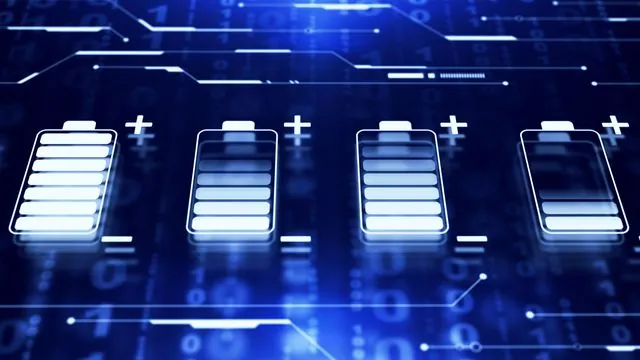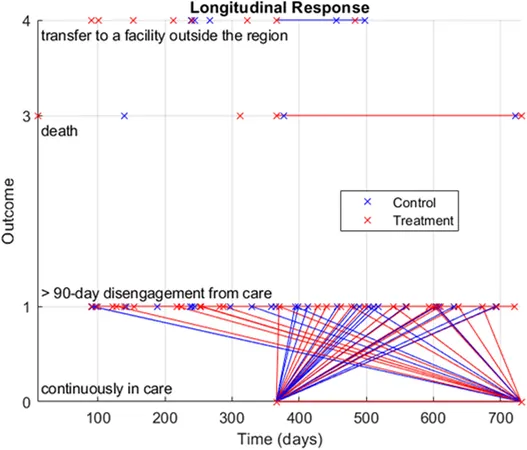
Breakthrough in Ion Speed Could Revolutionize Battery Charging and Biosensing!
2024-11-20
Author: Jia
Breakthrough in Ionic Movement
In an exciting development from the realms of nanoscience, scientists have shattered the speed record for ionic movement, which could pave the way for groundbreaking advancements in battery technology, biosensing, soft robotics, and neuromorphic computing.
New Method Unveiled
Researchers from Washington State University (WSU) and Lawrence Berkeley National Laboratory have unveiled a method allowing ions to traverse through mixed organic ion-electronic conductors at speeds more than ten times faster than previously recorded. This innovative technology merges the ion signaling found in biological systems, like those in the human body, with the electron signaling employed by our computers, creating a hybrid that could change the landscape of technology as we know it.
Ion Superhighway
Detailed in the acclaimed journal *Advanced Materials*, this novel technique enhances ion movement by utilizing specially designed molecules that lure and concentrate ions into a distinct nanochannel—effectively forming what the researchers have dubbed an "ion superhighway."
Impact on Energy Storage
This breakthrough gives us unprecedented control over the biological signals that life employs universally,” said Brian Collins, a physicist at WSU and the lead author of the study. “The rapid acceleration of ion movement could significantly impact energy storage solutions, heralding a new era for batteries.”
Versatile Conductors
The versatility of these conductors lies in their capacity to facilitate the simultaneous movement of ions and electrons, a feature crucial for optimizing battery charging and enhancing energy storage efficiency. Furthermore, they could power hybrid technologies that blend biological functions with electronic processes, such as neuromorphic computing which seeks to emulate the brain's thought processes.
Challenges in Mechanisms
Despite the promising capabilities, the precise mechanism by which these conductors manage the movement of ions alongside electrons has remained largely ambiguous. Collins and his team observed that while ions could flow through the conductor, their progress was hindered by a complex network of pathways designed for electrons, akin to navigating a rat's nest.
Engineering Solutions
To overcome this limitation, the researchers engineered a narrow, nanometer-sized channel dedicated exclusively to ion transport. Drawing inspiration from biological systems, they mimicked the ion channels used by cells in living organisms. This innovative design involved lining the channel with hydrophilic molecules, which attracted water-soluble ions, allowing them to glide effortlessly and swiftly—exceeding speeds previously thought possible.
Controlling Ion Movement
Conversely, when they employed hydrophobic molecules that repel water, the ions were discouraged from entering the channel and resorted to the slower, more cumbersome pathways instead.
Applications for Sensor Technology
An interesting facet of this research is the ability to toggle the attraction of these molecules through chemical reactions, effectively controlling access to the ion superhighway. This ability opens a plethora of applications, including the development of highly sensitive sensors capable of detecting chemical reactions based on the resulting electrical pulses, making it possible to monitor environmental pollution or neural activity in real-time.
Future Research Directions
The next crucial step,” Collins posits, “is to delve deeper into the fundamental principles governing ion movement. We hope to translate this remarkable phenomenon into technological innovations across diverse fields, from energy to medicine.”
Conclusion
As research continues, the potential applications of this technology seem limitless. Get ready, world; we might just be on the brink of a technological revolution fueled by this newly discovered ion superhighway!





 Brasil (PT)
Brasil (PT)
 Canada (EN)
Canada (EN)
 Chile (ES)
Chile (ES)
 España (ES)
España (ES)
 France (FR)
France (FR)
 Hong Kong (EN)
Hong Kong (EN)
 Italia (IT)
Italia (IT)
 日本 (JA)
日本 (JA)
 Magyarország (HU)
Magyarország (HU)
 Norge (NO)
Norge (NO)
 Polska (PL)
Polska (PL)
 Schweiz (DE)
Schweiz (DE)
 Singapore (EN)
Singapore (EN)
 Sverige (SV)
Sverige (SV)
 Suomi (FI)
Suomi (FI)
 Türkiye (TR)
Türkiye (TR)